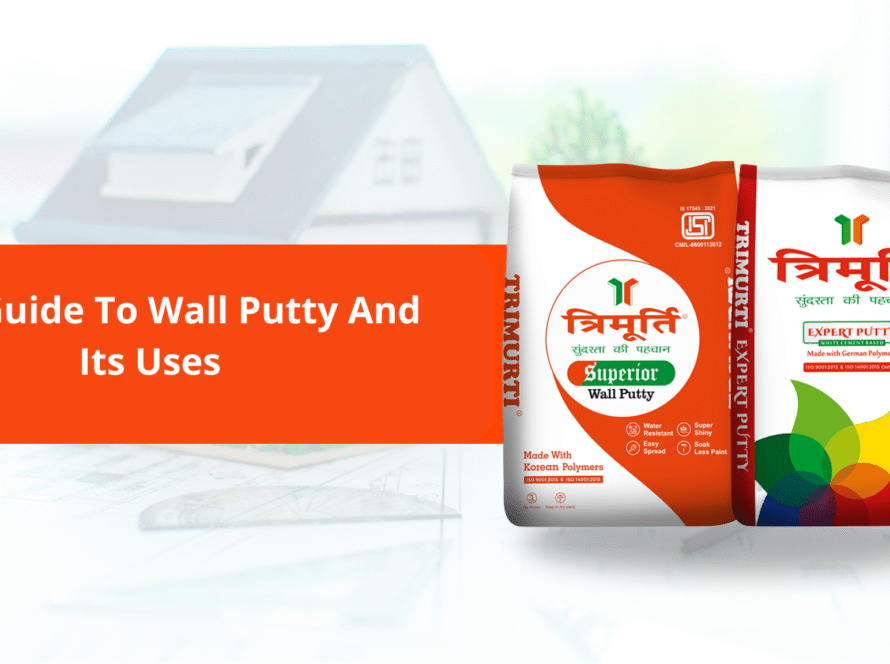Wall putty is a white-colored powdery substance that is blended and mixed with water to form a uniform paste. This paste is applied to the walls before painting them. Wall putty is water-resistant, therefore, with the assistance of thelayer of wall putty, the wall paint last longer.It develops the strength of the walls and helps in avoiding their flaking. It forms the great bonding with the base cement or concrete surface.
- Types of wall putty: There are two types of wall putty. First is white cement based and the second is acrylic wall putty. White cement wall putty comprises various minerals and polymers in it. Being white cement-based, it has superior binding quality. On the other hand, acrylic wall putty is a solution of water and acrylic. It is used solely in the interior of the house.
- Cement-based wall putty: Mixture of cement-based wall putti is stuffed in the gaps, cracks, or breaks in the walls and to cover them to make the wall surface uniform. It makes the damp in the wall even. Also, it has a higher water resistance trait. It is mixed with water to form a soft paste. It has better compatibility with the plaster of the wall and makes a durable base for wall paint. It can be used for giving shinny finish, architectural finish or textured finish to the walls. It can be applied on all the walls, whether outside walls or inside walls of the building, house, etc.
- Acrylic wall putty: It is a water-based solvent and hence does not require to be diluted in most of the cases. If sometimes dilution is required, it can be done with simple water. It gives them strength and endurance to the walls and good glaze or shine to the wall paint.As compared to wall putty based on white cement, it has an inferior binding trait.
- Application of wall putty: In the case, paint is to be applied for the first time, prior to applying putty for walls, make sure that the facade of the wall is free of dust, grease, etc. and is clean for proper application of putty. It should be applied after a coat of primer to fill the imperfections of the wall. One to two coatings of putty should be done for proper finishing. After all the layers are dried up, use the sandpaper to smoothen the dried surface. Proper application of wall putty ensures impeccable finishing of the wall and increased durability of wall paint. In the case of repainting, there is no need to apply wall putty on the whole wall again. It should be applied on only cracks, flakes, or wherever the finishing touch is required.
Everyone wants their home to look beautiful and flawless. The wall paint is the most important thing that makes your house walls look stunning. But wall putty is the reason behind how the wall paint would look. Proper application and good quality of wall putty can only give the required glaze to the walls.





